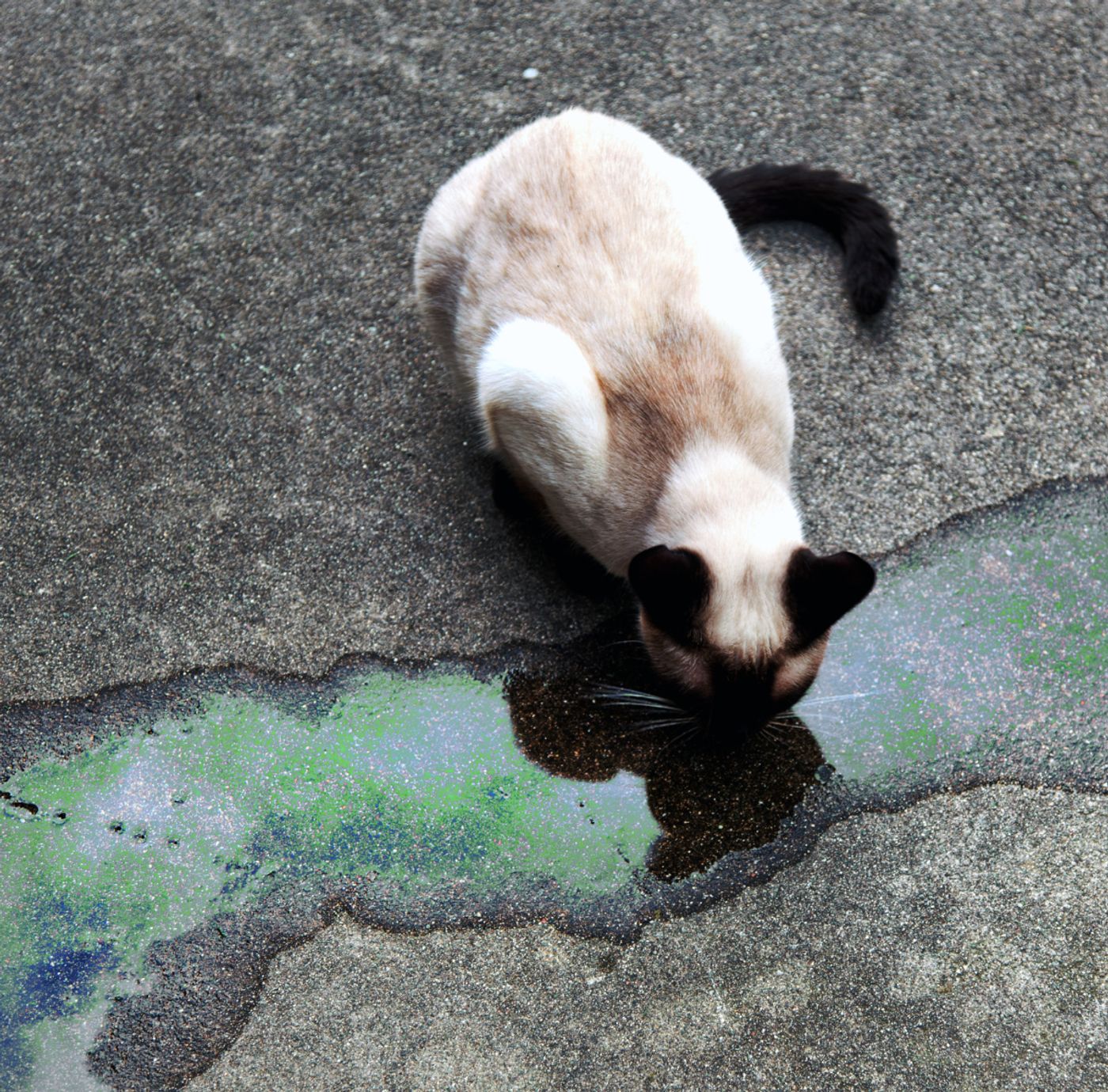PSA: Be Mindful of Animals When Maintaining Your Car's Antifreeze for the Winter
As temperatures around the globe begin to plummet in time for the autumn and winter months, car owners will inevitably start servicing their engine coolant systems to avoid frozen radiators.
While it’s great to stay on top of scheduled vehicle maintenance, animal experts over at Purdue University remind us all that it's also vital to handle related hazardous chemicals safely to prevent harm to animals and the environment; this includes storing and disposing of them properly when finished.
Image Credit: Robert Couse-Baker/Flickr via SPCA
Ethylene glycol, or more colloquially known as antifreeze or engine coolant, is toxic to pets, wild animals, and even humans. The sweet smell of the chemical, coupled with the attractive bright color, attracts animals and children that often ingest the chemical upon contact. That said, spills, improper storage, and incorrect disposal procedures can be a recipe for disaster.
Sadly, too many people either don’t know any better or merely don’t care to take the extra time to handle the toxic chemical properly.
Dumping antifreeze down the drain, emptying radiators or containers into the lawn beside the driveway, or throwing uncapped bottles into the trash can have devastating impacts on the ecosystem around us. The chemical then poisons water supplies, taints soil, and lures unsuspecting critters or toddlers into thinking they’ve found a sweet-tasting beverage.
Each of these circumstances leads to unwanted ethylene glycol poisonings, year after year, and they're entirely preventable.
“As it gets colder and colder, we will see more and more cases of ethylene glycol poisoning, unfortunately,” said Dr. Sarah Steinbach, an assistant professor at the Purdue University College of Veterinary Medicine. “Pets who have ingested the liquid may present as if they were intoxicated because ethylene glycol is an alcohol.”
“Ethylene glycol itself is not toxic, but when it is metabolized in the body, it becomes severely toxic to the kidneys. It causes some of the most severe kidney damage that we see,” Steinbach continued.
Related: Transgender fish: The result of flushing contraceptives and other chemicals down the toilet
Perhaps the most telltale sign of ethylene glycol poisoning is kidney failure. A few early symptoms of the condition include dizziness, fatigue, hyperactivity, or nausea, just to name a few. Cats, dogs, and other small animals may exhibit these (or similar) symptoms just minutes after ingestion; fortunately, there’s still time to save them at this point.
According to Purdue University, the toxicity levels peak to the maxes about two to three hours after ingestion, just after the body starts metabolizing the chemical. Kidney failure ensues, so it’s imperative to seek emergency care as soon as possible after ingestion.
The most effective way to treat ethylene glycol poisoning is with hemodialysis, a procedure where the body’s blood is drawn, filtered, and replaced. Most of the time, early treatment assures the survival of the animal or person, allowing them to go back home afterward.
Unfortunately, not all care centers offer hemodialysis treatment. Other care centers may induce vomiting to remove the toxin from the stomach. Still, there are ways to delay metabolization to buy more time and get the animal or person to a proper care center, so even if your nearest hospital or veterinarian can't treat the poisoning, they can advise you about what to do next. With that in mind, it's critical that you act fast if you suspect ethylene glycol poisoning.
In retrospect, the best way to prevent ethylene glycol poisonings is to handle the chemical carefully from the start. You might even consider letting a professional garage take care of your car this year instead of tackling the maintenance yourself, just to be sure that the chemicals go where they need to after service is complete.
Source: Purdue University, SPCA









